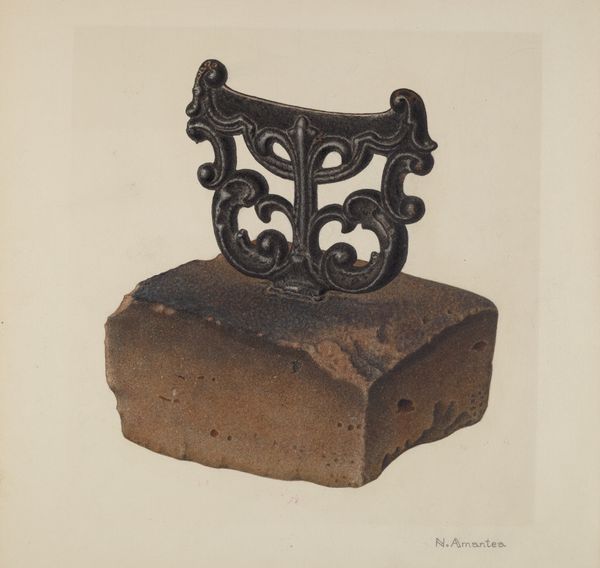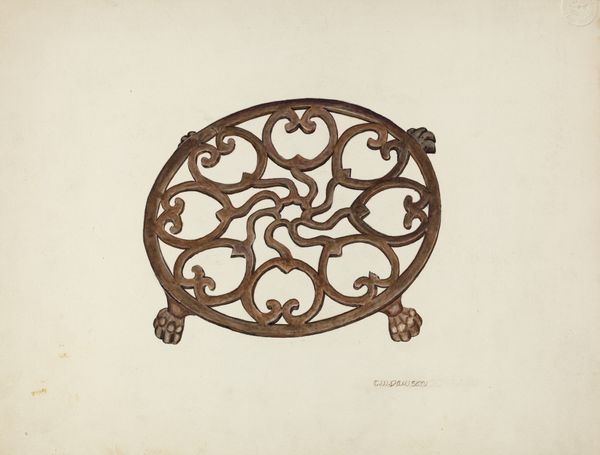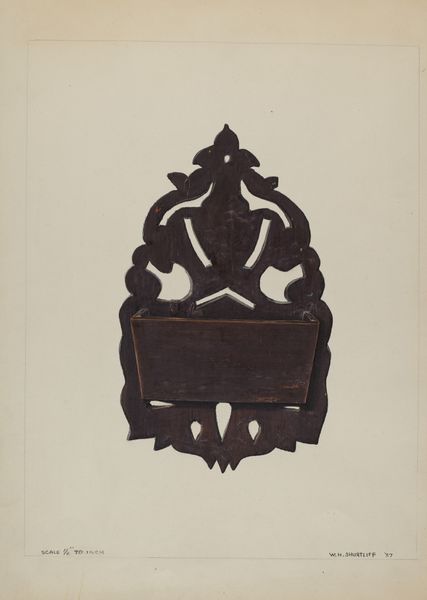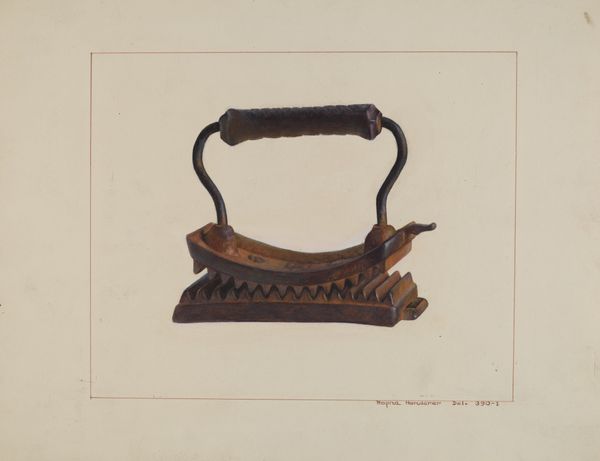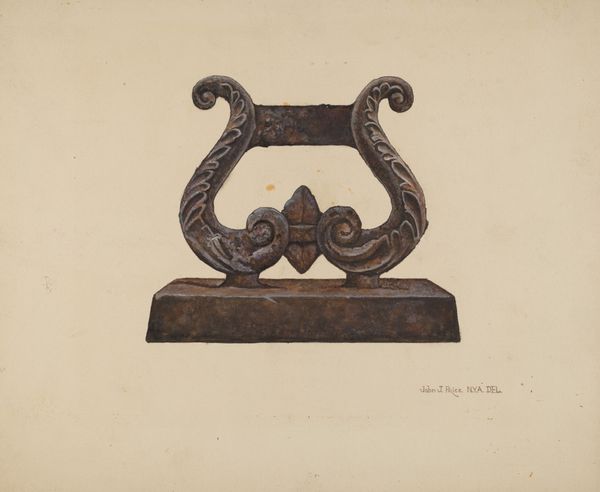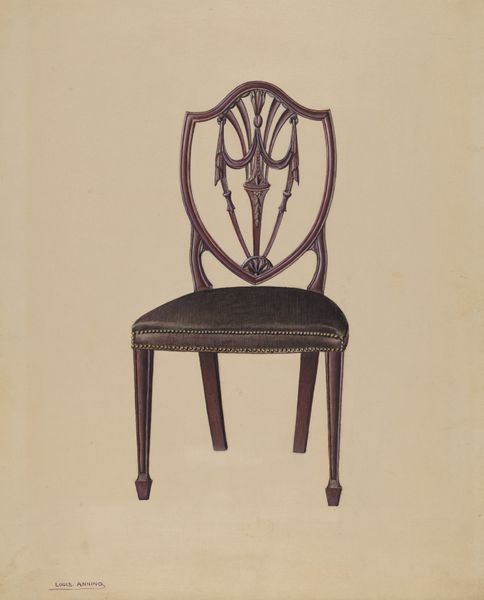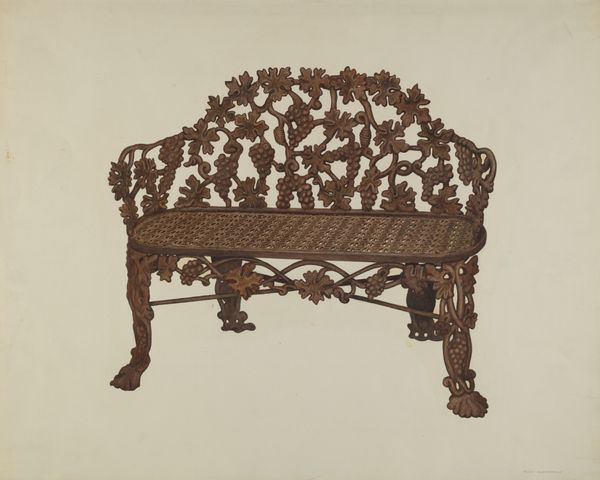
drawing, ornament, metal, photography
#
drawing
#
ornament
#
metal
#
photography
#
geometric
Dimensions: overall: 36.8 x 32.4 cm (14 1/2 x 12 3/4 in.)
Copyright: National Gallery of Art: CC0 1.0
Curator: This photograph features a wrought iron ornament, believed to have been made sometime between 1935 and 1942. Editor: It looks surprisingly light, doesn't it? Those delicate spiral forms give a sense of movement, even buoyancy, that belies the weight of iron itself. Curator: Precisely! The geometric pattern suggests a symbolic tension—strength in the vertical lines contrasted with the fluidity of the spirals. These could evoke concepts of growth, resilience, the very essence of organic forms taking root even in hard materials. Editor: Ironwork always brings up questions of labor for me. To heat and shape metal like this speaks of both the skill and sweat equity. The photograph flattens this process but thinking about the labor adds depth. It seems that the repetitive swirling of the metal must take dedicated physical efforts. Curator: Indeed, it is a potent point! These recurring motifs act as cultural echoes. We encounter them through diverse eras and art forms, perhaps revealing a universal fascination with cyclical patterns, hinting toward cycles in the natural world and the journey of our own inner selves. Editor: Yet these kinds of repetitive designs could also suggest the repetitive factory works of this time period. There may have been individual artistic control, or more likely part of a manufacturing process. It begs the questions of if each scroll unique or created by the means of die cut, etc. The photograph in effect may flatten these aspects and suggest these items where wholly and singularly forged. Curator: So true. Its beauty becomes complex because of how these things take part in labor. This single ornament echoes something beyond the single object that shows the many other factors. Editor: And understanding the tools and efforts behind the crafting, framing with that history and skill, makes a big difference.
Comments
No comments
Be the first to comment and join the conversation on the ultimate creative platform.



